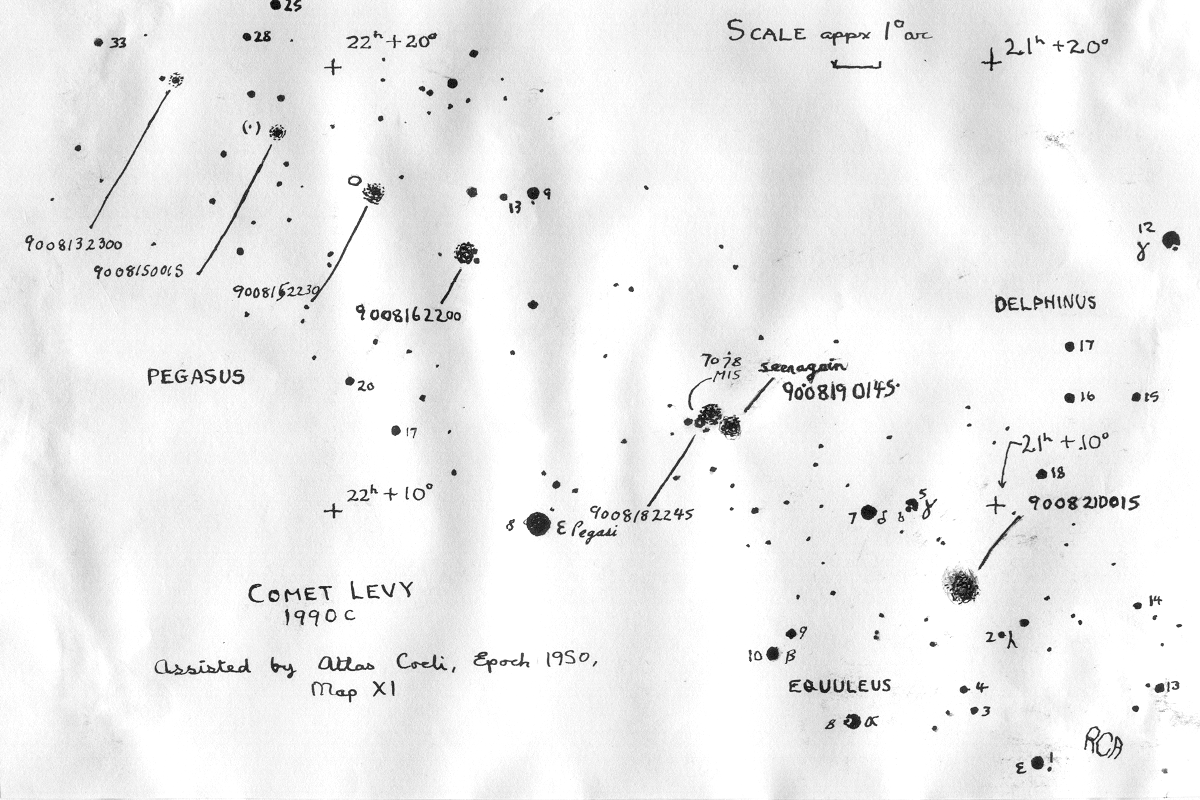Orwell Astronomical Society (Ipswich)
Comet C/1990 K1 (Levy), 13 July - 21 August 1990
After a disappointing apparition in spring 1990 of comet C/1989 X1 (Austin), hopes were high that comet C/1990 K1 (Levy) would provide a better observing opportunity. OASI members David Payne and Roy Adams reported observations as follows in the OASI Newsletter.
David Payne
Comet Levy is much superior to Comet Austin: I have already observed it several times, it easy to locate and has the advantage for me of being visible from my home observatory!
My latest observation was on 29 July 1990 using 10x80 binoculars. The object lay mid-way between α Andromedae and β Pegasi, the top two stars of the Square of Pegasus. The comet is an easy binocular object appearing fainter by one or two magnitudes than the nearby Andromeda Nebula, M31. There was no real evidence of a tail; however, the coma was displaced off centre, towards the west with respect to the bright central nucleus.
The comet will be well placed for observation throughout August, and should brighten steadily, possibly becoming a naked-eye object by the end of the month. As it approaches perihelion on 24 October, it will move south, eventually becoming more favourable for southern hemisphere observers. Orbital predictions for the object are not yet very accurate.
Roy Adams
Comet Levy is much easier to find than Comet Austin, at least two magnitudes brighter and from two to three times the apparent diameter. On the night of 20-21 August, I thought that the coma was displaced approximately SW with respect to the nucleus - however, I was using only 7x50 binoculars and the observation was difficult so I was not confident.
The drawing below plots my positional estimates of the comet on six nights during August. It is now fast travelling south, so opportunities for further observation from Ipswich are limited. I was unable to see the comet by naked eye.

David Payne & Roy Adams